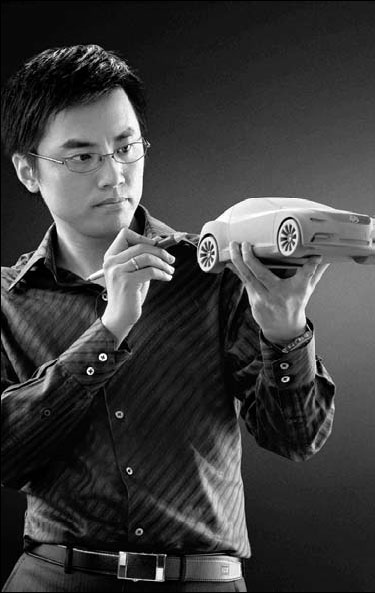Car designer drives faster innovation
|
Car designer Cao Min. Provided to China Daily |
When Cao Min was standing in line at the Shanghai Expo Garden last summer, he noticed a man nearby was wearing a shirt with an interesting pattern.
He took out his iPad and began to make a sketch of it.
A passer-by might have thought he was a fashion designer or an illustrator. But, actually, the 39-year-old designs cars.
Influenced by his parents, who are engineers, Cao developed an interest in vehicles and machines at an early age.
He majored in industrial design in Shanghai Jiaotong University, where he started his higher education in 1991. But he never expected to become a car designer.
"At that time, few of our classmates knew what a 'car designer' does. It was a completely new job to many Chinese people," he says.
In 1998, Cao saw a job vacancy at The Pan Asia Technical Automotive Center, China's first automotive engineering and design joint venture. He got the spot.
He immediately became involved in the company's first concept car project, Qilin.
The company says it aims to create cheaper private cars for ordinary drivers. Nearly all cars in China in the late-1990s were designed with businesspeople in mind.
Cao traveled throughout the country to research consumer demand and discovered most Chinese care more about a car's functionality than its appearance. For example, many people wanted a trunk large enough to carry a television.
Cao decided to replace much of the car's steel with plastic and make it smaller. Qilin made its public debut at the 1999 Shanghai Auto Show and became an immediate success.
In 2007, Cao was assigned to the Buick Riviera Concept Car project and worked on the first international concept car created by a Chinese team.
The vehicle fuses the formal elements that appeal to businesspeople with a trendy flair that speaks to private drivers, Cao says.
It uses smoother shapes and colors, so it appears "more like a sculpture than a vehicle", he explains.
"The car is the second most complicated industrial product after a plane," Cao says.
"Car designers face a plethora of daunting tasks every day."
Before he took the position, he was told it would be a "24/7" job.
"Over time, I came to realize a car designer takes inspiration from everyday life and continues his pursuit of perfection."
He often heard criticisms of China's car design sector, as many people from overseas say the country is not globally competitive in this realm. But he disagrees.
"I feel fortunate to be a Chinese car designer," he says.
"This country is undergoing the most wonderful social transformations, and ours is a generation that is growing up with the development of the automobile industry," he continues.
"Designers like me are maturing in pace with the rapid development of the domestic market."
He believes he can find answers to difficult problems or find inspiration for future car concepts in his hobbies - traveling, reading, shopping and watching movies.
For instance, he took inspiration for a headlight concept from a jade bracelet he saw while shopping in the City God Temple in Shanghai.
Consequently, the Buick Riviera Concept Car's headlights are made from jade-like material that is cyan in color, adding a traditional Chinese flourish to the modern vehicle.
He says practicing calligraphy also helps him understand his trade and hone his skills.
"Being a good car designer is just like holding a writing brush. It takes years of practice before you become a master," he says.
China Daily
(China Daily 02/19/2011 page11)









